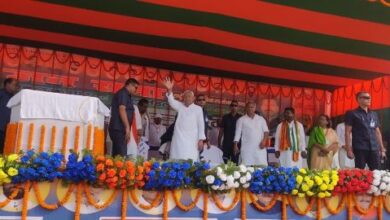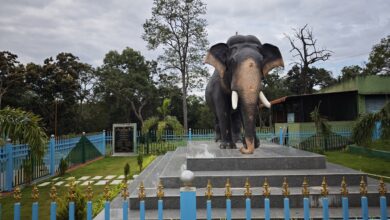Meghalaya-Tripura media delegation visits ISRO

Bengaluru, Oct 16: Meghalaya and Tripura journalists visited the ISRO Telemetry, Tracking and Command Network (ISTRAC) campus here.
The visit of the 14-member delegation was part of Karnataka press tour.
They interacted with Dr A K Anil Kumar, Outstanding Scientist and Director of ISTRAC.
The visit offered the delegation valuable insights into the operations of ISTRAC, a critical wing of ISRO that provides end-to-end telemetry, tracking and command (TT&C) support for India’s satellite and space missions.
Dr. Kumar briefed the media team on ISTRAC’s key role in enabling real-time mission operations, including launch vehicle support, satellite tracking and deep-space communication.
One of the key highlights of the visit was a guided tour of the Mission Operations Complex (MOX) – the nerve centre for satellite and interplanetary mission control. The delegation witnessed how spacecraft telemetry and navigation data are monitored and managed.
The historic Chandrayaan-3 mission, which successfully soft-landed on the Moon’s south pole, was monitored and guided to success from this facility – making India the first nation to achieve this landmark feat.
Dr. Kumar also spoke about ISRO’s growing infrastructure in the northeastern region of India. He highlighted the upcoming space surveillance centre at Chandrapur in Assam, being developed under ISRO, which will strengthen India’s space situational awareness capabilities.
Government of Assam has already allotted 200 bighas of land for the project, the Director informed.
He also emphasized the vital contributions of the North Eastern Space Applications Centre (NESAC) located at Umiam.
This centre provides a wide range of satellite-based services for disaster management, agriculture, resource mapping, urban planning and environmental monitoring, supporting development across all eight northeastern states.
Additionally, while referring to Meghalaya, the Director highlighted ISRO’s weather radar facility in Cherrapunji, Meghalaya, which plays a critical role in atmospheric and climate studies. The location’s unique climatic conditions enable high-quality data collection for research into precipitation, cloud formation, monsoonal behavior and broader environmental changes, feeding into both national and international climate monitoring systems.
The interaction concluded with an open dialogue, where the media delegation appreciated ISRO’s commitment to scientific advancement and regional inclusion. Dr Kumar encouraged continued collaboration with the press to ensure that the benefits of space science and technology are communicated widely and reach every corner of the country.




